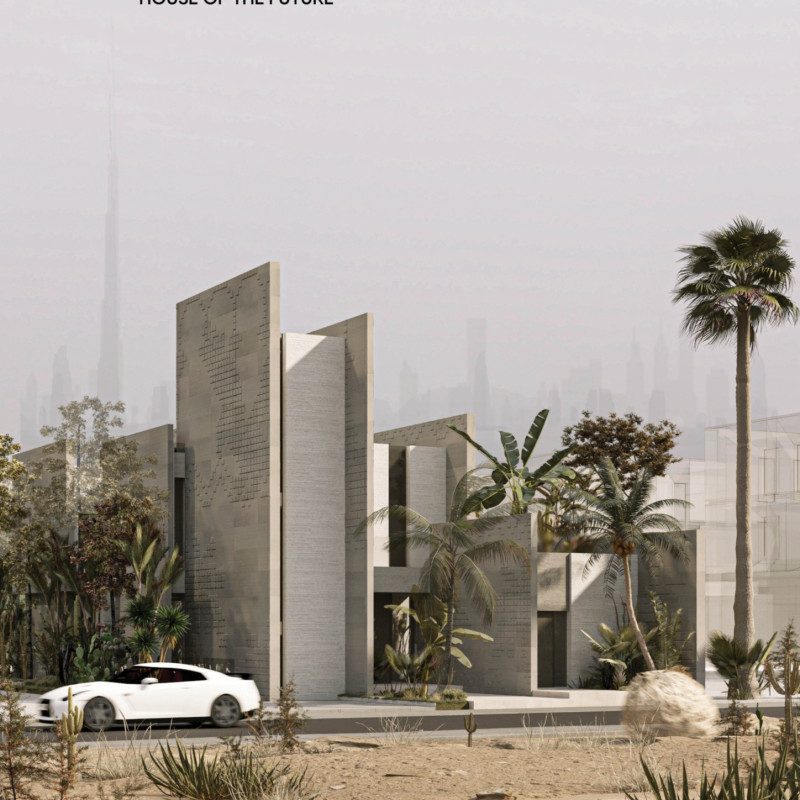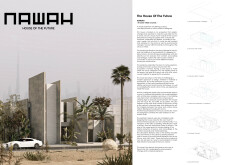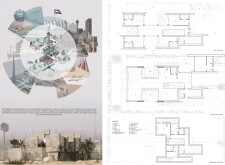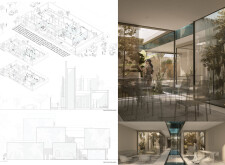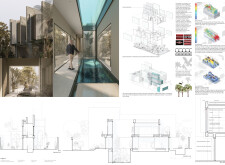5 key facts about this project
## Overview
Located in the United Arab Emirates, NAWAH embodies an innovative housing model that reflects the region's cultural heritage and environmental considerations. The design prioritizes sustainability and adaptability, addressing the diverse needs of modern families. The project's architecture serves as a narrative of evolution, resonating with both its ecological and cultural context.
## Spatial Organization and User Interaction
NAWAH features a layered spatial layout that facilitates the flow between public and private areas. The integration of courtyards is a key design element, enhancing cross-ventilation and supporting family interactions while providing opportunities for privacy.
The ground floor consists of open-plan living spaces that connect seamlessly to landscaped outdoor areas, promoting a cohesive relationship between indoor and outdoor environments. The first floor is dedicated to personal quarters, ensuring tranquility and privacy, with balconies and terraces that further integrate outdoor living. The basement offers versatile spaces for entertainment and storage, accommodating the possibility of future adaptations.
## Material Selection and Environmental Strategies
The facade of NAWAH utilizes a juxtaposition of exposed aggregate concrete and smooth glass, emphasizing resilience while inviting natural light into the interior. Vertical fins provide shading and privacy, while also referencing regional architectural forms.
Sustainability is central to the design, with features such as integrated water harvesting systems that enhance microclimatic control. Furthermore, the strategic orientation and material selection mitigate heat gain, promoting energy efficiency in the arid climate. The incorporation of solar panels supports renewable energy generation, contributing to the overall sustainability objectives of the building. Reflective materials and extensive planting are included to reduce the urban heat island effect, underscoring a commitment to environmental responsibility.


